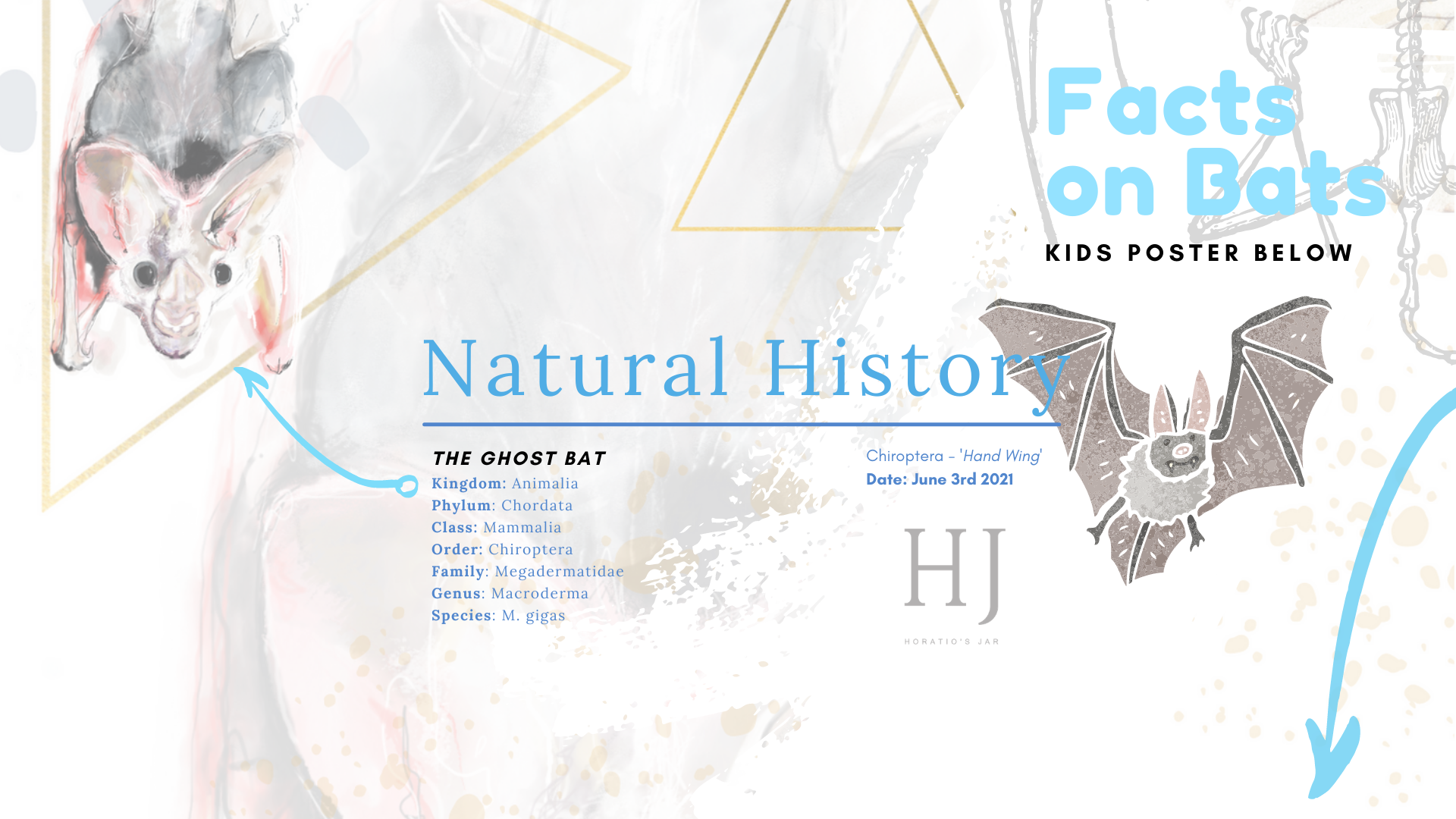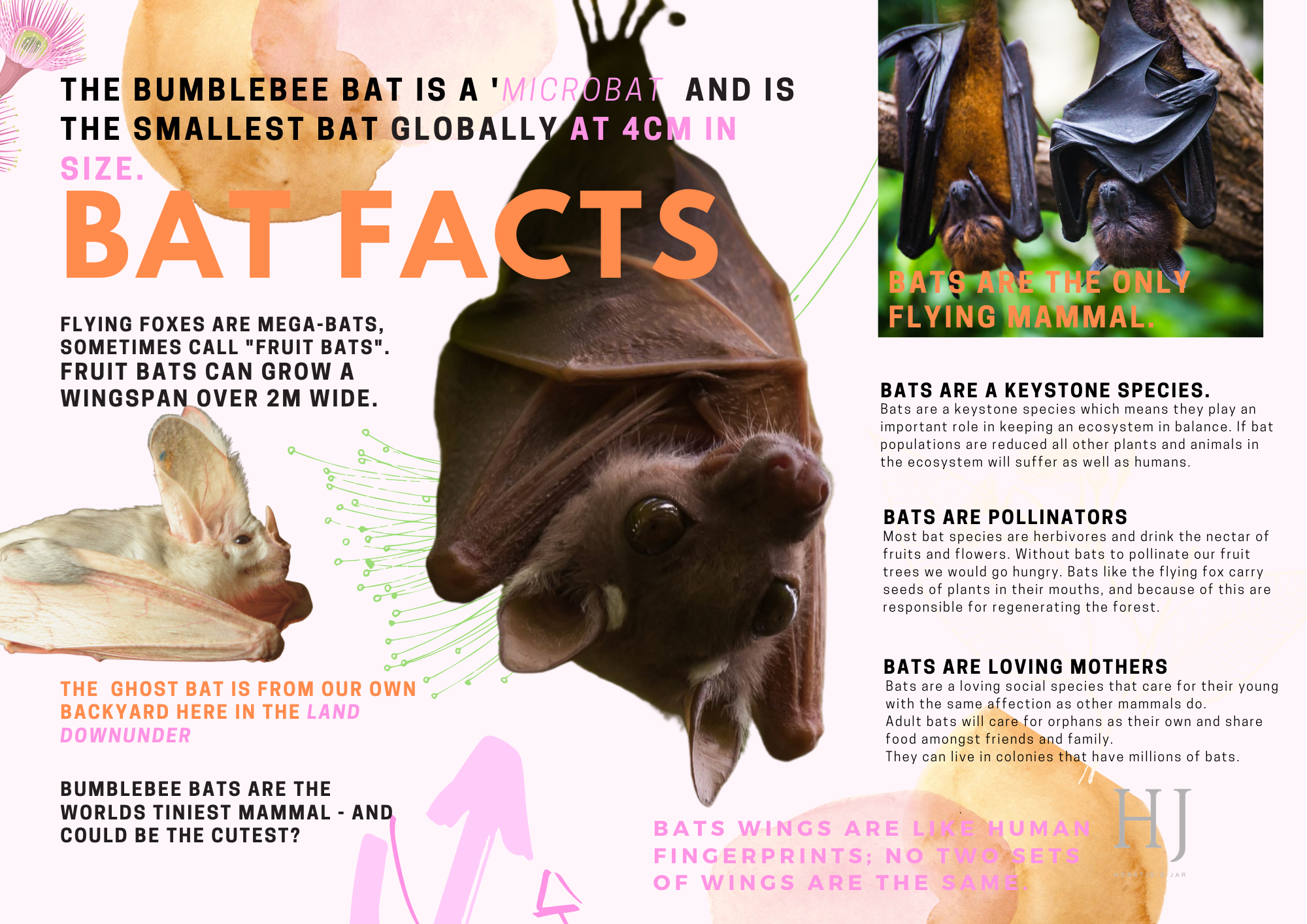The Worlds only Flying Mammals – Bat Facts for Kids
Bats live almost everywhere on earth, except the Arctic and Antarctica.
There are 1300 species of bats, and only three of the species are Vampire Bats. So yes, Vampire Bats are real, but they are also tiny and not interested in drinking human blood.
Australians, we have an incredible catalogue of bat species, and many of them adorable and curious to look at. My favourite could be the ‘Eastern Tube-nosed Bat from Queensland. They have gorgeous yellowish specs of colour on their bodies – check out the link to learn more on Australian Bats.
https://australian.museum/learn/animals/bats/eastern-tube-nosed-bat/

Facts on Bats
- Bats are significant to the health and balance of all-natural ecosystems. For example, bats are pollinators, and we rely on them for many of the fruits we eat.
- A single bat can eat up to 3000 small flying insects in an hour. Bats keep our flying insect populations in check; imagine if there were no bats?
- Bats do carry diseases, so be very careful not to handle a wild bat without supervision.
Although very rare – bats can give you Rabies, it is important to be careful not to be scratched or bitten by a wild bat.
——-
PUBLISHER’S DISCLAIMER: The publisher of this blog post (Digital Schools PTY LTD) works in partnership with the school as a 3rd party provider to help build and maintain the school website. Digital Schools sources a range of experts who provide products and/or services to educational institutions and we work with them to produce and publish topical information in the form of blog posts that we think may be relevant, interesting or topical to families within the community. The views, opinions and content listed in this blog post are that of the guest contributor and/or publisher (Digital Schools). It should be noted that whilst the publisher and guest contributors are acting with the best intentions and in the best interests of the school and their community to provide helpful or interesting information, sometimes the content may not necessarily reflect the views of the school.
The information in this blog post is not meant to be used, nor should it be used, to diagnose or treat any medical condition. For diagnosis or treatment of any medical problem, consult your own physician. The school and the publisher of this blog post are not responsible for any person reading or following the information in this article who may experience adverse effects.
Any references to external websites or sources are provided for informational purposes only and do not constitute endorsement by the school or publisher in any way and the publisher and/or school cannot guarantee accuracy of information listed.
If you have feedback on any content on this platform, you can submit it to the publisher using the feedback link provided at the bottom of this page.




